by Historian John J. Binder
Although the general public may not be aware of it, historical artifacts related to organized crime are collectible, and some of them can be quite valuable. And Al Capone is at the center of the market for mobster collectibles. According to Geoff Schumacher, Vice President of Exhibits & Programs at the Vegas Mob Museum, “We get more inquiries about possible Capone artifacts than those dealing with any other person or mob-related subject.” In fact, no mobster is more famous than Al Capone. He is a legendary figure not only in the US but around the world as well. And he has been for decades.
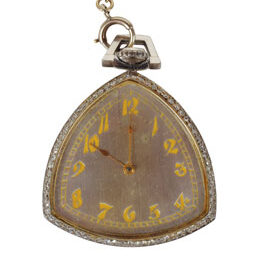
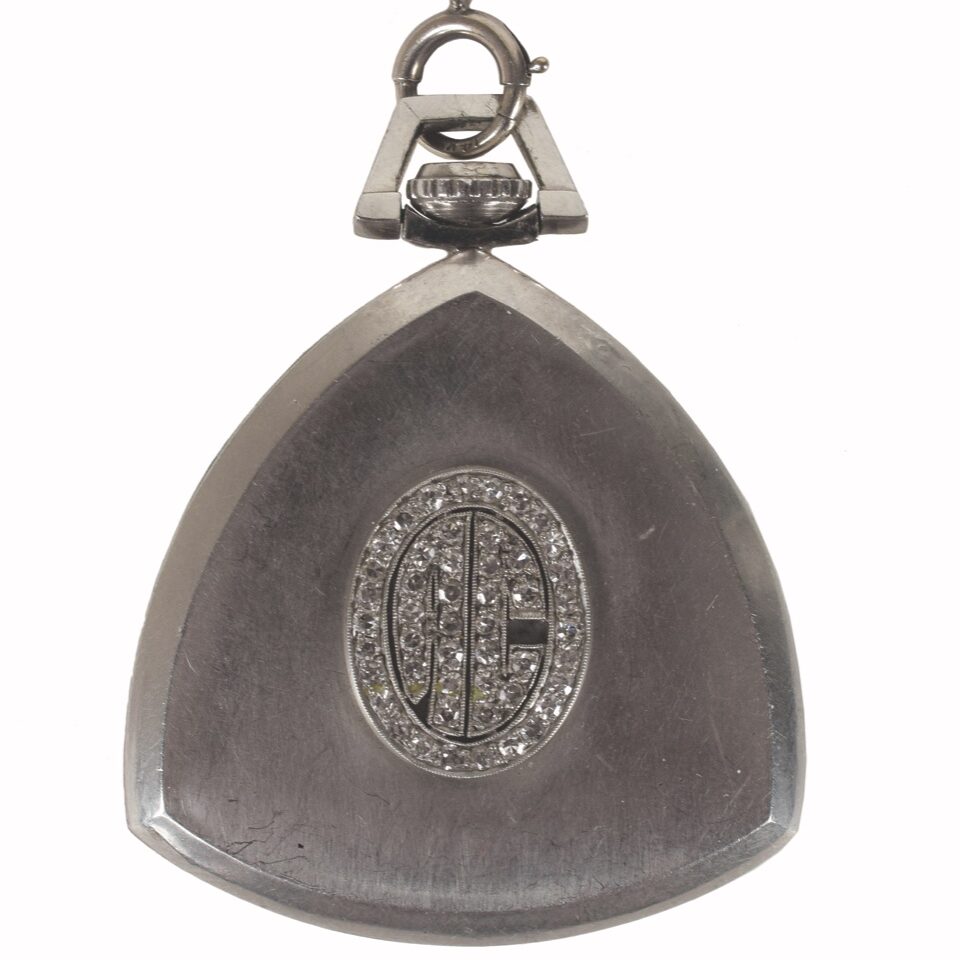
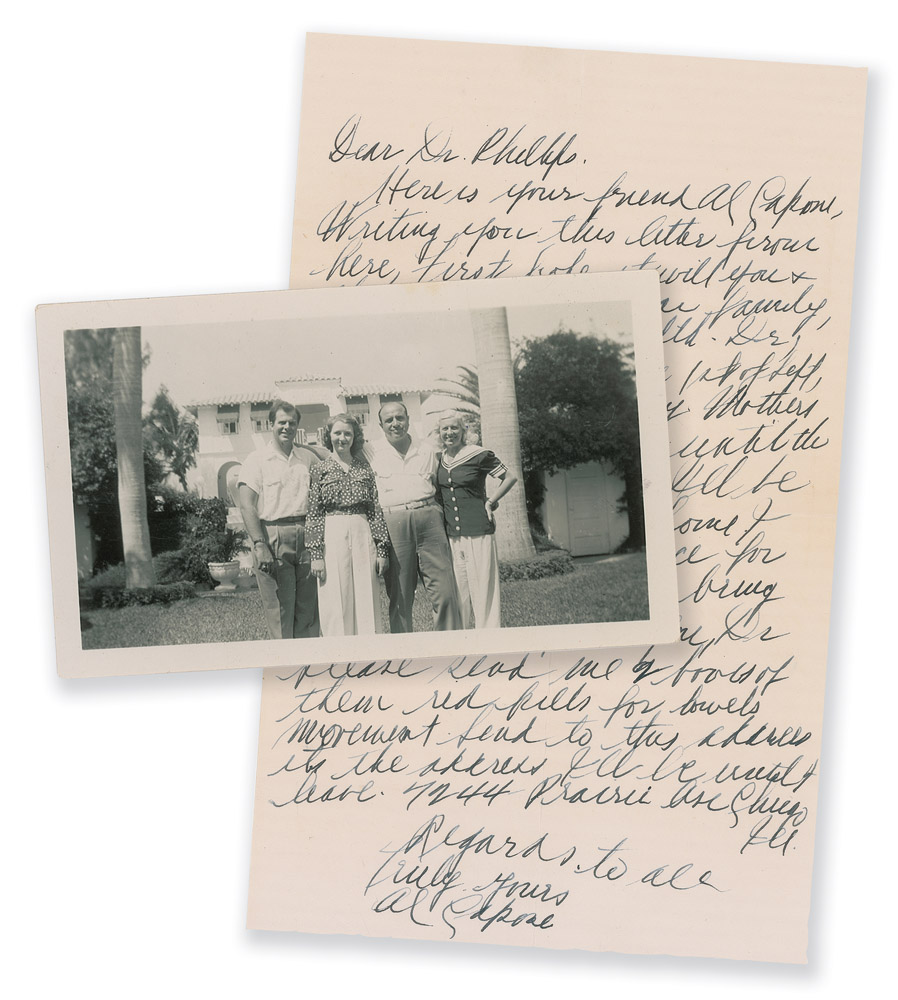
For example, in 2017 a platinum, diamond encrusted pocket watch that belonged to Alphonse Capone and which came with ironclad provenance was sold at RR Auction by one of his direct descendants for $84,375. A signed letter from Al Capone to his only child, Albert Francis “Sonny” Capone, brought $62,500 at RR Auctions in 2016. And a grouping of Capone related documents and photos sold for almost $30,000 in 2013. A .38 caliber pistol that belonged to Chicago mobster Frank Gusenberg, which was found on the floor of the garage at the infamous St. Valentine’s Day Massacre, sold twice recently at RR—each time for more than $100,000. As perhaps the penultimate example, in 2021 Al Capone’s granddaughters sold his favorite pistol for approximately $1 million.[1]


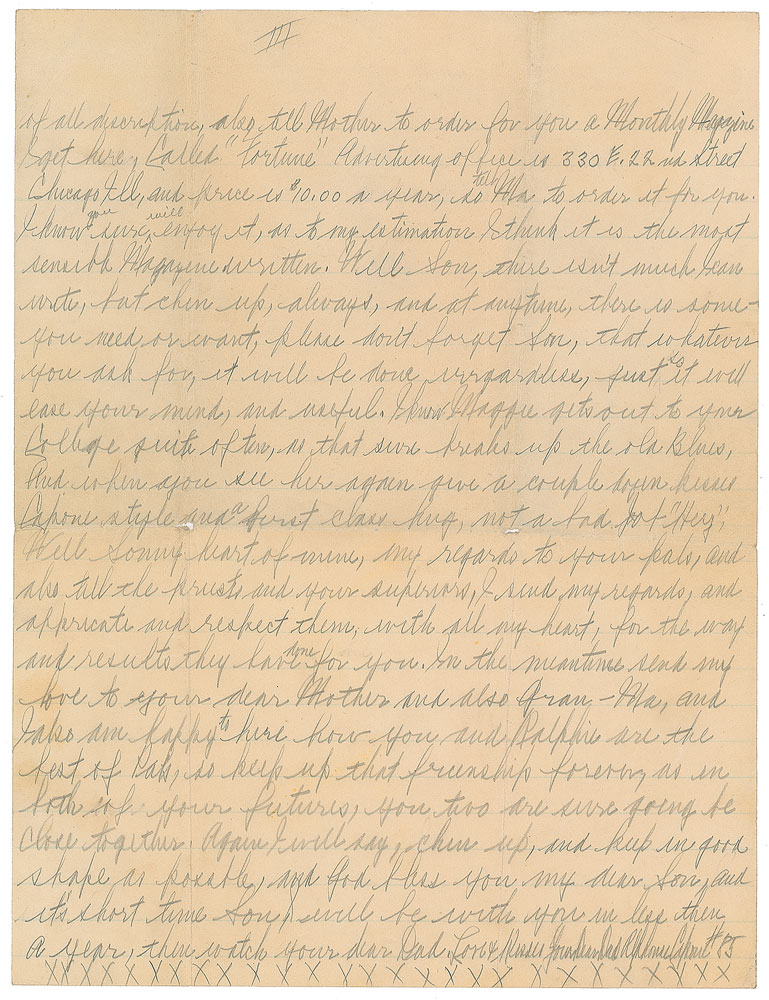
Before turning to various aspects of this type of collecting and Capone related items in particular, I will begin with some thoughts on why there is a market for such things. The interest in mobster artifacts stems from the public curiosity about crime and specifically organized crime. This is largely driven by our fascination with the “Dark Side.”[2] We live quiet, law-abiding lives. Therefore, the last thing we want to do after a mundane week at work is see a movie or tv or read a book about a quiet, law-abiding person’s equally mundane life. The other side of the fence is more fascinating; it is what we do not know intimately. Crime, mayhem, and murder are on that side of the fence.
Increased Fascination with Crime
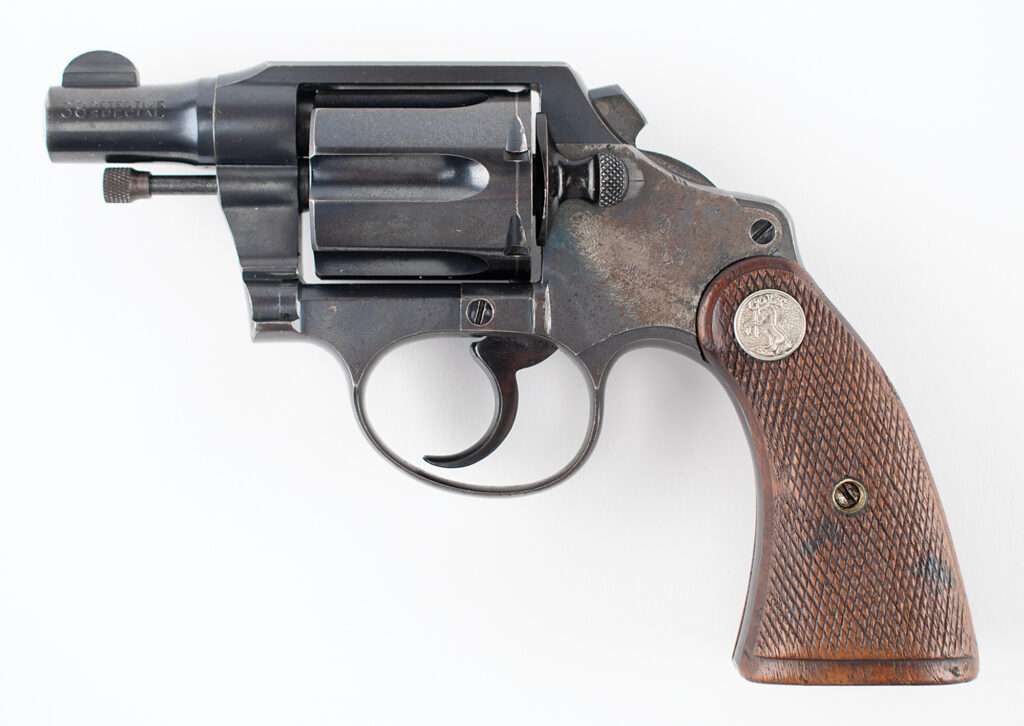
And this curiosity has increased recently as evidenced by the number of movies and television series where the protagonists are criminals, such as in Ocean’s Eleven and its sequels, or where an initially honest person turns into a complete criminal, such as in Breaking Bad, and the enormous number of crime related documentaries. As I like to say, in our society “What was once seen as bad, is now good and therefore extremely interesting.” This includes things like tattoos, multiple body piercings, and high-powered Harley-Davidsons.
As a result, the collecting world has evolved. What was once uninteresting and had no real value, has in many cases become quite collectible. The fact that Van Gogh was not able to sell any of his paintings, which now bring tens of millions of dollars at auction, during his lifetime is well-known. But there are more recent examples of how collecting has changed and continues to change. In the world of photography, Vernacular Photography is a prime example. The venerable Daile Kaplan, who recently retired after directing the photography department of Swann Galleries in New York City for 30 years, says, “During the time I was a Vice President at Swann, I saw first-hand the evolution of the interest in vernacular photographs (images where a photograph’s subject matter and artistic quality eclipses the name or reputation of the maker), in particular, crime-related images. My long-standing curatorial interest in the genre translated into selling examples in Swann’s auctions. But everything changed in April 2000, when a studio portrait of The Wild Bunch–Butch Cassidy, the Sundance Kid, and gang members posing in bowler hats–realized $85,000. This stellar price heralded an exciting new collecting genre focusing on colorful outlaws, convicted criminals and political activists.”
“John Binder was responsible for introducing me to 20th-century American gangster and crime materials, a segment of the market he’s written about extensively. These grisly visual documents caused my staff and I to characterize John as the ‘Prince of Photographic Darkness.’”
Over the last 20 years mug shots and other police photos related to famous as well as ordinary criminals have sold for strong prices at Swann Galleries, RR Auctions, and other auction houses.
As the quote by Ms. Kaplan indicates, I am a long-time collector of police and crime-related photos, especially ones from the world of organized crime. I also own many books on the subject, for the information they contain, and I have a small collection of artifacts from the illegal gambling places that were once common around the Chicago area. But I do not own any hoodlum weapons, cars, or (barring an exception or two) personal items.[3] Over the years, when such things came to my attention, I generally passed the information along to Capone historian Mario Gomes. Mario has been acquiring Capone related artifacts for over 20 years. His collection includes private photos related to the Capone family, a monogrammed shirt that the mobster owned, items from his home in Miami, and a variety of other interesting pieces of history. Therefore, I turned to him for more information about verifying and acquiring mobster artifacts and anything associated with Al Capone. This article finishes with a discussion of antique cars that were reportedly owned by Capone or members of his circle. These often have the highest prices of any hoodlum artifacts, at least in terms of what the sellers are asking for them.
Mario Gomes on Gangster Memorabilia
JB (John Binder): Mario, when did you first become interested in Al Capone?
MG (Mario Gomes): As a young boy, I watched black and white Untouchables re-runs featuring Robert Stack as Eliot Ness. I re-kindled my interest in 1987, when the movie with Robert DeNiro and Kevin Costner came out. After seeing the film, I wanted to learn more about the real historical figures, and I can say the reality is much more riveting than that movie!
JB: How long have you been collecting Capone items, and what are some of the most interesting things in your collection?
MG: I started to get into hardcore collecting near the end of the 1990’s, especially after seeing you in a documentary about Al Capone. As I became immersed in the subject, I wanted to learn more through documents, newspapers, and artifacts. My most prized items are Al Capone’s Marshall Field custom made, monogrammed, Nile green silk shirt, his personal telephone with the Capone family tag from his Miami home, and his silver pocket watch fob gifted to him by his wife Mae, which has his initials on it. It contains photos of his wife, son, mother, and sister. I also own his cuckoo clock from his office in the Lexington hotel. And I have the original set of photographs taken of Alphonse Capone in his casket. These were sold to me by a relative of the guy who took them secretly at the funeral home in 1947.
Relatedly, I own the signed funeral contract for John Torrio and his wife. In with it were photos and a lock of John Torrio’s mother’s hair. This all came to me via a Torrio relative. So, I have his Mitochondrial DNA! [Author’s Note: A few years ago, I was contacted by someone who claimed to have a treasure trove of John Torrio’s personal items, including some that (if authentic) clearly would have his DNA on them. The discussion petered out when I asked for detailed information about the trail of ownership. But if it had continued, I would have warned this person that before anything else happened there would have to be an analysis of Torrio’s mother’s DNA (with Mario’s help) and the DNA on the supposed Torrio items.]


Other notable items in my collection are Hymie Weiss’s signed bible (which I purchased from his great-nephew) and two bullets that were picked up at the scene of the Massacre and examined by ballistics expert Calvin Goddard. These were originally part of the same large body of evidence that the Mob Museum later acquired from my friend Neal Trickel.
JB: What is the history of the wall from the Massacre garage, and how did you come to own bricks from it?
MG: Actually, I own two bricks from the famous Massacre Wall. The building at 2122 N. North Clark changed hands several times after 1929. It was used for many years by moving and storage companies. Charles and Alma Werner, the last owners of the building, actually sold a few bricks from the Massacre Wall to individuals before 1967.
In early 1967, Mr. George Patey from Vancouver, B.C., Canada learned that the building would be demolished as part of an urban renewal project. George Patey was the high bidder for the remaining bricks in the Massacre Wall and had it moved to Vancouver. I was lucky enough in 1997 to befriend my fellow Canadian and to buy two of the bricks from him before he sold some other individual bricks to the public. After Patey’s death, his niece sold the parts of the wall that were still in George’s possession, which constitutes the great majority the original Massacre Wall, to the Mob Museum.
JB: What is the greatest difficulty in collecting mobster historical artifacts? How high do you set the bar on authenticity before you buy something for your collection?
MG: Difficulty in finding interesting items for sale and certainly authentication are the biggest problems. My motto is “When in doubt, walk away!”
JB: What do you do to determine whether an item is authentic?
MG: I do careful research and ask a lot of questions! Because no one is an island, I seek out others immersed in this subject and try to connect timelines, people, and events with their help. Most of the bona fide items I bought came from relatives. But even then, it was good to observe the broader market, and know that particular relatives were not flooding it with less than convincing items, which would taint anything else they were trying to sell. For example, the cuckoo clock was being sold by Ralph Capone’s family. Luckily, I identified it through Pasley’s and Kobler’s books on Al Capone. The “Eureka” moment in my researching it was when I came across Chicago American editor Harry Read’s personal papers. He was a close friend of Al Capone. He described Al’s Lexington hotel office and the clock’s intricate details, as related to him by Capone himself.
JB: What can you tell us about Al Capone’s silk shirt?
MG: This was given by Mae Capone to Maurice O’Donnell, the cousin of her brother-in-law Louis Clark (her sister’s husband), and I bought it from his daughter. O’Donnell was close to the Capone family, even shooting at bottles on occasion with Alphonse Capone. But a little detective work helped verify the story that it was originally Al Capone’s. To be brief, it not only has a Marshall Field label on it denoting that it was custom made, but the monogram is in the correct location on the left sleeve (as per the testimony about his wardrobe purchases by a Field employee at Capone’s income tax trial). You can still see the letters A and C marked in blue, inside the worn dark green diamond, which guided the person stitching the monogram with thread. Notice the shape of the monogram on the watch fob; also a diamond, with the same script for the letters.
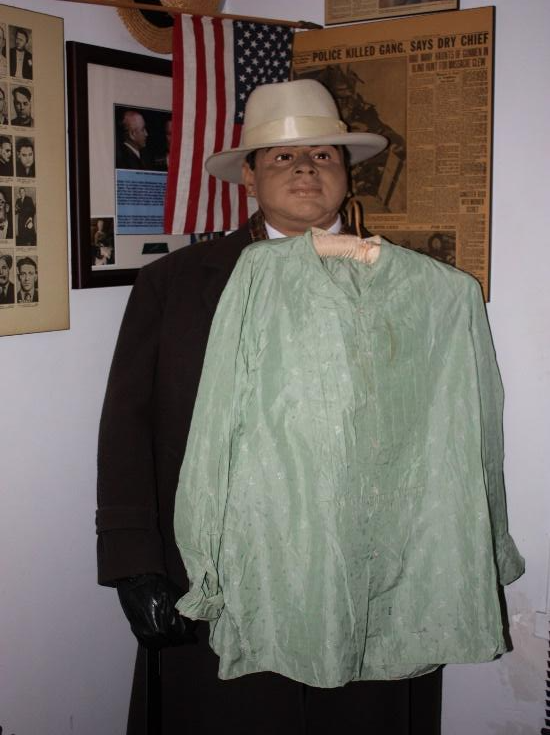

JB: What differences are there in authenticating personal items vs. photographs vs. automobiles vs. guns vs. other types of items?
MG: Personal items and photographs are my favorites. It is easier to find out about those. As already mentioned, an ironclad statement of provenance from a credible relative is enormously valuable. Notice that I used the phrase “ironclad statement of provenance.” Many sellers will offer you a statement of provenance. I have seen a few that were not worth the sheet of paper they were printed on. They sometimes said nothing more than “I, the Seller, say that this item once belonged to Al Capone.” A rock-solid letter of provenance will provide explicit details about the item’s past, tracing it all the way back to Capone, the background of the earlier acquisition by the seller, and if possible supporting documentation such as a bill of sale or a serial number that ties it conclusively to Al Capone.
With photographs, experts can look at the type of paper and the quality of the image to help determine if it is original. Obviously, it is important to carefully examine the people in the photo to try and verify the supposed identifications. There are lots of photos that have popped up over the years claiming to be of Al Capone and/or other well-known gangsters, but often the people in them do not look anything like who they are asserted to be. There was one studio portrait for sale some years ago, which was taken by a photographer in the middle of Pennsylvania, where the seller claimed the two men in it were Al Capone and, if I recall correctly, President Calvin Coolidge. John, the two men looked more like me and you than Capone and Coolidge! Additionally, I believe that you and Matt Luzi are the first historians to use facial recognition software to confirm or reject “naked eye” identifications in mobster photos. That certainly takes things to a higher level.
In more extreme cases, for a fee a forensic document examiner can, depending on the item, determine the age of the paper and the ink used based on their chemical makeup, analyze the handwriting and any signatures, and conduct other tests to determine how old it is.
Guns and cars are by far the biggest headaches. The laws concerning guns are a major problem for potential buyers. As you and I both know, most of the time Capone gang guns had their serial numbers defaced or removed by paid gunsmiths, which often makes owning them illegal.
JB: Can you give us some examples of items that are incorrectly believed to be genuine gangster artifacts simply due to the passage of time? For example, modern-day replicas are sometimes manufactured to look like an original for the sake of display or sale to tourists as souvenirs, although they are clearly labeled as reproductions when sold. But years or decades later purchasers often believe that they have found a valuable original.
MG: The Colosimo’s Cafe matchbooks that are frequently thought to be authentic are a splendid example. It lists Al Capone as the manager there, which never happened. Those are 1960s gag items put out by the Gaslight Club in Chicago.

Original matchbooks from Colosimo’s look quite a bit different:

JB: A bigger problem is that when things are quite valuable, unscrupulous people will counterfeit them and try to sell them as originals. In the high-end art world, there is a long history of paintings that were claimed to have been done by famous artists, but they were actually created by forgers. There are also stories of people stamping out coins and other metal objects to pass them off as rare historical pieces.[4] Are there any examples of this in the world of mobster artifacts?
MG: Absolutely! Dishonest people will buy old items at resale shops or on eBay and attribute them to mobsters to try and cash in on this history. There are a few well-known instances of this. One person took a ring that he bought on eBay with the initials AL on it and tried to pass it off shortly thereafter, again on eBay, as belonging to Al Capone. The problem (for him) was that a search of recent eBay auctions showed that this same ring was sold by someone else not long before with no Capone attribution at all. It was priced several thousands of dollars lower before it magically became Al Capone’s ring and was offered for sale again!!
Another example is a questionable silver cigarette case that has been on auction a few times since the early 1990’s. It appears that someone simply bought a silver cigarette case that already had a “C” crest on the front and then engraved it “To Al and Mae, 12-18-29, From John Torrio.” This was supposedly a present to the Capones for their 11th wedding anniversary. Well, the person that fabricated this dubious item took the date for their marriage from John Kobler’s biography of Al Capone. The problem is that Kobler, in his otherwise fine book, made one big mistake. He got the wedding date wrong, and this is likely where December 18, 1929 on the cigarette case comes from. Experts know that Al Capone and Mae Coughlin were married on December 30, 1918, not on December 18th! Besides, if Torrio wanted to commemorate their wedding anniversary, he would surely have sent them something that Capone and his wife would both enjoy, not a cigarette holder that Al Capone would carry on his person. And in December 1929 Capone was in jail in Pennsylvania. That is an odd time for Torrio to give him a gift.
All of these dubious items have one thing in common. There is no or next to no provenance and no solid timeline of ownership that traces the items back to Al Capone.
JB: What other information can you share with us on this subject?
MG: Al Capone’s personally owned items were only monogrammed AC or ACG, not AL, not with an A or any other letters. Al Capone did have a “C” engraved on some things he bought, but these were not exclusively for him. They were also for use by his guests and family and friends. such as the cutlery and flatware at his dinner parties at the Lexington Hotel.
Another lucrative area for tricksters is counterfeit signatures. Al Capone never signed his name as Alphonse Capone for his friends or members of the general public. He did that only on official records. Some fraudulent individuals will take an old, small piece of paper originating from the 1920s and recreate his signature using a fountain pen with brown ink. Stay away from cut signatures, they are highly suspect.
In sum, I only buy items with excellent provenance. A genuine artifact is much more likely to retain its value, and it is not in danger of being debunked by a sharp-eyed historian, which will cause the price to plummet in the marketplace. The more money asked for an artifact, the stronger should be the provenance. The story, the dates, and the people involved have to fit the known history. Items passed down by actual Capone descendants, relatives, or people that were close to the Capone family are much more likely to be genuine. While such things are rare and hard to come by, they do show up once in a while. [This concludes the interview.]
The Two Signatures
To further illustrate the type of confusion that Mario Gomes alludes to, in fall of 2019 RR Auction was planning to sell a court document signed by Frank Nitti that had been consigned to them, believing that it pertained to the Mob Boss in Chicago from 1932 to 1943. A major third-party authenticator had verified it based on Nitti’s signature. The document was in regard to an arrest for burglary of all things. This was a red flag because during the period just mentioned the Mob Boss referred to as Frank “Nitti” by the press would not have lowered himself to commit a common burglary. More importantly, the Chicago Mob Boss was born with the name Francesco Nitto, and he always signed his name as Francesco or Frank Nitto, sometimes including his middle initial or his middle name. Conversely, there was a small-time Chicago burglar, who was born well after Francesco Nitto and used the name Frank Angelo Nitti.[5] Mars Eghigian first revealed this information in his book After Capone.
For clarity, I will refer in what follows to the Mob boss as Nitto and the burglar as Nitti. Nitto’s signature appears on his Selective Service registration forms for WW I and WW II:


His signature is remarkably consistent over time, as can be seen here and in copies of various court documents that he signed.
This is the WWII Selective Service form containing the signature of Frank Nitti:

These were obviously two different men who were born 25 years apart, and their signatures are clearly not the same.
Here are the Frank Nitti signatures from the document that sold at auction in 2012 and the one scheduled for sale in 2019:


The signatures on the 2012 and 2019 items are identical. Notice that the letter “F,” if we temporarily ignore the crossbar, looks like the number seven. The crossbar is almost entirely to the left of the vertical portion. The letter “r” looks like a seagull in flight, and it touches the “a” at the very top, but it is not connected to the “F.” The bottom of the “N” goes well beneath the start of the first “i.” The Frank Nitti signature on the WWII draft card has virtually all the same, distinctive features. Clearly the burglar Frank Nitti signed both these documents.
To their credit, RR immediately removed the item from the upcoming sale when they were notified of this. By chance I learned later who the consignor was. He honestly believed that this item, which he had bought some time before, was genuine. It had been represented as such to him by his seller at the time. While a bit nonplussed by the turn of events, he had no desire to try and sell something to someone else if it was not authentic. And this episode illustrates another important aspect of collecting gangster artifacts. When buying at auction make sure that the auction house is reputable. Such an establishment will make every effort to verify the authenticity of the items in its sales, and, if they learn that an item is not authentic, they will pull the item from the auction—as RR Auction did with the Frank Nitti item above.
There is a longer back story on this Frank Nitti document. About 25 years ago a Chicago auction house offered for sale various artifacts which apparently pertained to famous mobsters. In the auction there were three court documents related to arrests for minor offenses, such as burglary, which Frank Nitti signed. This was long before the fact that there were two completely different criminals referred to around Chicago as “Frank Nitti” appeared in print.
However, before that auction Chicago organized crime historian Mark Levell noticed that one of the three arrests occurred long after Frank Nitto died in 1943, and he informed the auction house of this fact.[6] The auctioneers left the items in the sale, but they disclosed the information that Levell provided to them. The group of Nitti documents sold, and thus they got into the hands of collectors. They and likely other Frank Nitti documents have been resold over the years with the claim that they pertained to the Chicago Mob Boss.
What about the guarantee by the outside authenticator of the signature on the Nitti signed document? They surely compared the signature of Frank Nitti on that item to one on another Frank Nitti document that had sold previously. This led them to declare that the 2019 auction item was authentic–not knowing that Francesco (Frank) Nitto was an entirely different person. From my own research, no genuine Frank Nitto items have been sold at auction, and therefore no example of his signature is available from past sales. To find them one must search genealogical databases and federal and local archives.
Capone’s Cars
My first experience with a mobster car was about 30 years ago when I learned of a 1925 Packard Dual Cowl Phaeton which was reputed to be a “Capone car.” This appellation can be used for an auto believed to have been owned by Al Capone himself or by one of his gang members or associates. There was, however, no documentation to support this claim, and none is ever likely to be found because at the time the vehicle records in Illinois only went back to 1967.[7]
This is one of many “mobster” cars that are in the hands of collectors today. Usually there is a vague story attached to the vehicle, but there is rarely any documentation to support the folklore. While such automobiles have often been fully restored, and they are quite valuable, they would be worth much more if it could be proven that a major underworld figure once owned them.
Supposed Capone cars are at the pinnacle of this market for several reasons. Putting Al Capone’s name on an item can greatly increase its value. But there are other reasons why a Capone label may be attached to an antique car. It appears that some collectors, out of pride, genuinely want their car to have been Al Capone’s. This is equivalent to a coin collector owning an uncirculated 1804 US silver dollar. Also, over time the facts have been forgotten and stories change. Many things that have a mobster association are now labeled as “Capone” items because he is the hoodlum that everyone remembers after the other gangster, who may actually have once owned the item, has been forgotten.
Fast forward to January 2020. A high-end auto dealership in Las Vegas offered to sell a 1928 Cadillac Model 341 Sedan to the Mob Museum for $1 million. It had been fully armored at one time, and it had reputedly belonged to Al Capone.[8] A story written about it at the time quotes a statement from an article that appeared in 2012: “While the provenance [of this car] has never been questioned, its origins were never confirmed beyond a reasonable doubt until now.”
The written documentation that came with this car traced its history back to only 1932, when a second or more distant owner after Capone, if Al Capone ever owned this car, acquired it. For years there was only a verbal story that it had once belonged to the world’s most famous criminal. What was the new evidence that supposedly linked it irrefutably to Alphonse Capone? In 2006 a man in his 80s said he recognized the car from when he worked on it, with his father, as a 10-year-old boy. A visual recollection from 75 years before hardly constitutes irrefutable proof, especially when this man had neither paperwork nor a VIN number to support his story. And this illustrates how quickly some people, including writers, are willing to accept certain things as solid evidence when it enhances the story.
I first became aware of this particular Cadillac in 1991 when I spoke to Daniel Trainor of Chicago, IL. For years his father, Edward Trainor, owned a dealership on the South Side of the city that specialized in unusual cars. Daniel Trainor shared with me a pamphlet which Edward Trainor had written years earlier relating the history of the car, which he had purchased before 1932. When the Mob Museum learned of this, they commissioned me to write a report on this vehicle and other so-called “Capone” cars.

To briefly summarize the pamphlet, Edward Trainor says that this machine was built in July 1927, and it was then sold by a dealer in Detroit to a local gangster who had it armor plated. A wholesale car dealer in New York City bought it next. When it was publicly displayed in New York, people jumped to the conclusion that it was Capone’s bulletproof Cadillac which they had heard stories about. It was then purchased by Edward Trainor, who without any hesitation displayed it in Chicago as “Al Capone’s armored car.” Next, it was shown in a traveling circus in Wisconsin. When his employees walked off with the receipts, Trainor almost certainly sold it to Patrick Moore, who began displaying it at carnivals and similar events in early 1932. The paperwork tied to this car does not include a bill of sale from Edward Trainor to Moore. It begins with a discussion of Moore and his wife owning it in 1932 or so.
It is certainly possible that a mobster once owned this vehicle. Edward Trainor states as much, and since he gained nothing in terms of money or fame by admitting that he misled the public, his account comes across as very credible. Also, very few law-abiding citizens bulletproofed their cars in the 1920s. Therefore, it was most likely owned by a hoodlum in Detroit and almost certainly not by Al Capone. Based on this research, the Mob Museum declined to purchase the automobile.
Interestingly, this 1928 Cadillac is one of three (or more) cars that were displayed publicly in the early 1930s as “Al Capone’s” armored car. It is the most famous of them and toured in the US as well as outside the country. Another one is the 1930 Cadillac Series 452 V-16 Sedan that was later owned by Imperial Palace Auto Museum in Las Vegas. The make and model year of the third such vehicle is unknown. It was exhibited in South Bend, IN in December 1931 by a man named Clark Felgar. However, the state police confiscated it because it was illegal for a private citizen to own an armored car in Indiana.
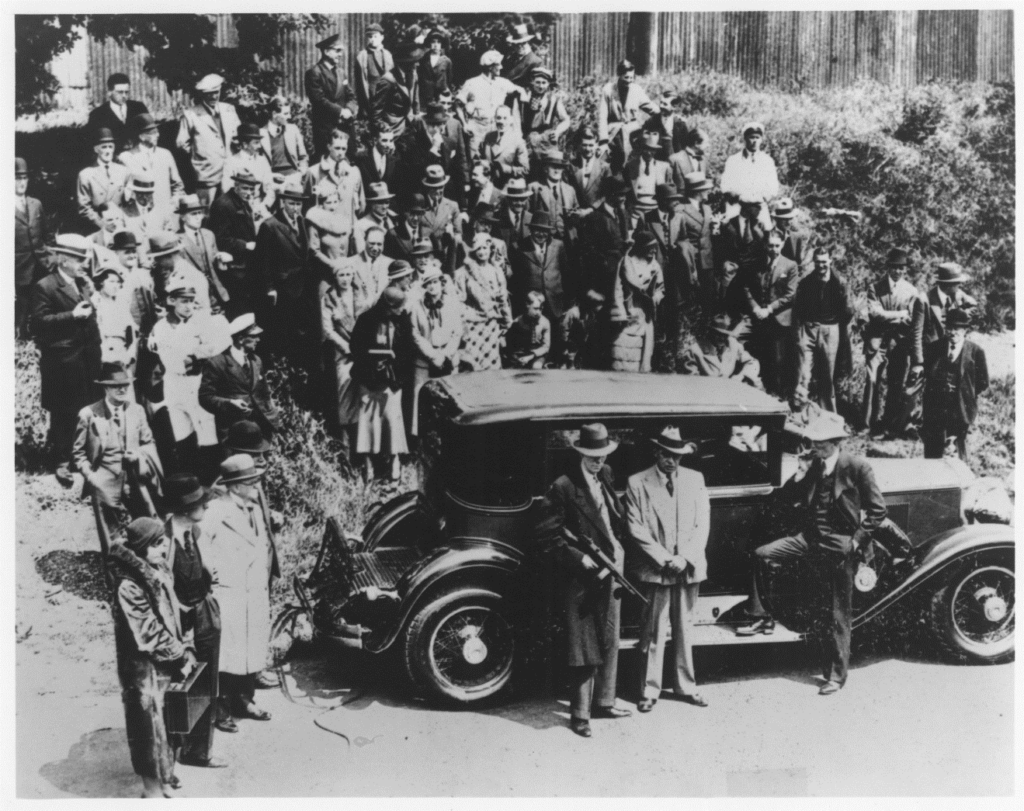
There are other, still existing Cadillacs that are claimed to be “Capone” cars. These include a 1929 vehicle which was owned at one time by Paramount Pictures, a 1932 model Caddy, and a 1940 Series 90 V16, Style 9033-F Formal Sedan (which is in a museum in Massachusetts). Several other automobiles round out the extensive list of supposed Capone cars. Capone reportedly owned two different Packards at various times. One, a 1936 model, reportedly has a title with Capone’s name on it. It is currently owned by a private collector, and I have not been able to obtain a copy of the title.[9] What the cars in this paragraph have in common with the armored ones that were displayed publicly at one time is that I have seen no solid evidence, even after doing quite a bit of research, that verifies that any of them ever belonged to Alphonse Capone.
Relatedly, there are a number of vehicles that can be shown fairly convincingly to have been owned by Alphonse Capone or one of his relatives. The “granddaddy” of them all is the 1925 Cadillac that he reportedly had bulletproofed in 1925. It is discussed in various books, and no one has ever refuted that he had such a car. However, there is no concrete information about it. For example, we do not know its VIN number, which would help us determine whether it still exists today. So, although it is widely accepted that Capone had such a car, we have no factual information about it.[10] Other such automobiles are documented by the testimony at Capone’s income tax evasion trial, government records, or newspaper accounts. No further details, such as VIN numbers, are available about any of these automobiles and none of them have surfaced in the car collecting world. So, these autos seem to no longer exist.
To summarize the evidence, over the years a number of Cadillacs, competitors of the Cadillac, and other vehicles, were owned or were allegedly owned by Al Capone or his relatives. Ignoring the vehicles attributed to his extended family, could Capone or his wife really have owned all the automobiles mentioned above? When Al Capone was at or near the top of Chicago’s underworld, from about 1923 to 1931, he was swimming in cash. Money meant nothing to him, and he spent it as fast as he received it. Therefore, it is likely that he bought new cars on a regular basis during those years. After Al Capone was released from Alcatraz in 1939, his family received over $30,000 a year from his brother Ralph, which allowed them to live comfortably. So, during the 1940s the Capones may still have regularly bought new cars. Therefore, Alphonse Capone and his wife owned many cars over the years—although where these vehicles are now is not at all clear.
The purpose of this part of this post is not to drown readers in the details of “Capone” cars. It is to illustrate the pitfalls associated with collecting “Capone” automobiles. There is no shortage of motor vehicles that have a Capone story attached to them. There is, however, a shortage of automobiles that still exist which can be convincingly shown to have belonged to Alphonse Capone. The Mob Museum, for example, is interested in locating a Capone vehicle. But after a detailed search, which included contacting owners, museums, auction houses, the Cadillac Motor Company, and the department of motor vehicles in several states, I have found no iron clad proof that any of the cars in the hands of collectors today actually belonged to Alphonse Capone or his wife.[11]
Overall
In sum, proving the authenticity of mobster artifacts can be exceedingly difficult. Items that supposedly belonged to Al Capone are often the most problematic. Overall, the supposed Capone cars are probably the least likely to be genuine. Therefore, collectors need to be especially careful with mobster artifacts. Hopefully, this article, which includes insights from historian and collector Mario Gomes, will help people to better understand this corner of the antiques market and to research such items. Buying from a reputable seller, such as an auction house that carefully researches items before they are listed for sale, can greatly decrease any concerns that potential buyers may have about a gangster related item.
Footnotes
[1] All these prices include the buyer’s premium.
[2] See, for example, John J. Binder, “The Fascination with Organized Crime.”
[3] Although I have information about such things, as discussed in the second section of this post.
[4] See https://coinquest.com/cgi-bin/cq/coins.pl?coin=1368.
[5] His birth name was Angelo Nitti.
[6] Mark Levell was rightfully suspicious about these items in general because the top mobster in Chicago would not be committing petty crimes.
[7] In many states the Department of Motor Vehicles currently retains only the most recent 10 years of such records.
[8] The details about this particular car and the other automobiles discussed below, including references to supporting newspaper articles, can be found, unless otherwise noted, in John J. Binder, “The History of the Armored 1928 Cadillac Model 341 Sedan and Other Cars Reputed to Have Been Owned by Alphonse Capone (A Report Prepared for the Vegas Mob Museum)” (February 20, 2020).
[9] It is possible that Alphonse Capone’s younger brother Umberto, who went by the name Albert Capone, owned this car. Alphonse Capone was in prison from 1932 to 1939, and clearly, he would not have been buying automobiles during those years.
[10] Could this be the armored “Capone” car that Clark Felgar displayed in Indiana in 1931? It is possible, since the 1925 Cadillac is unaccounted for. However, the South Bend Tribune reports that Al Capone purchased the Felgar car on November 18, 1931, in used condition, and then had it “gangsterized.”
[11] Perhaps such proof will become available, in the cases where I was not able to speak with a current owner, when these cars are sold in the future.


